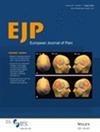In the presence of pain, whether clinical or experimentally induced, individuals commonly show impairments in the control of muscle force (commonly known as force steadiness). In this systematic review and meta-analysis, we synthesized the available evidence on the influence of clinical and experimental pain on force steadiness.
MEDLINE, EMBASE, PubMed, CINAHL Plus and Web of Science databases were searched from their inception to 19 December 2023, using MeSH terms and pre-selected keywords related to pain and force steadiness. Two independent reviewers screened studies for inclusion and assessed their methodological quality using a modified Newcastle–Ottawa risk of bias tool.
In total, 32 studies (19 clinical pain and 13 experimental pain) were included. Meta-analyses revealed reduced force steadiness in the presence of clinical pain as measured by the coefficient of variation (CoV) and standard deviation (SD) of force (standardized mean difference; SMD = 0.80, 95% CI = 0.31–1.28 and SMD = 0.61, 95% CI = 0.11–1.11). These findings were supported by moderate and low strength of evidence respectively. In the presence of experimental pain, meta-analyses revealed reductions in force steadiness when measured by the CoV of force but not by the SD of force (SMD = 0.50, 95% CI = 0.01–0.99; and SMD = 0.44, 95% CI = −0.04 to 0.92), each supported by very low strength of evidence.
This work demonstrates that pain, particularly clinical pain, impairs force steadiness. Such impairments likely have clinical relevance and could become targets for treatment when managing people experiencing musculoskeletal pain.
This systematic review and meta-analyses enhances our understanding of motor impairments observed in people experiencing musculoskeletal pain. It underscores the significance of incorporating force steadiness assessment when managing individuals experiencing musculoskeletal pain. Additionally, it suggests that future research should explore the potential benefits of force steadiness training in alleviating patients' symptoms and enhancing their functional performance. This could potentially lead to the development of innovative therapeutic approaches for individuals suffering from musculoskeletal pain.



